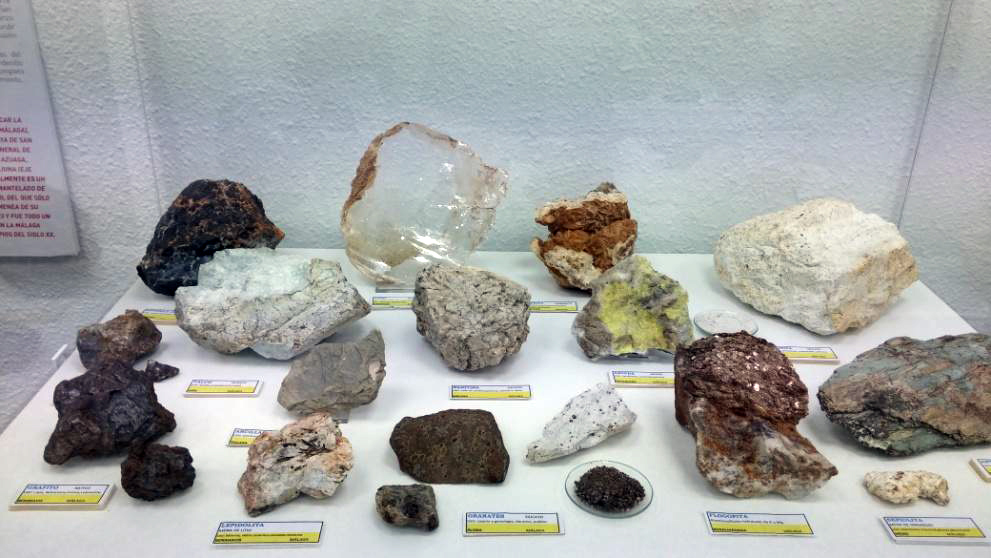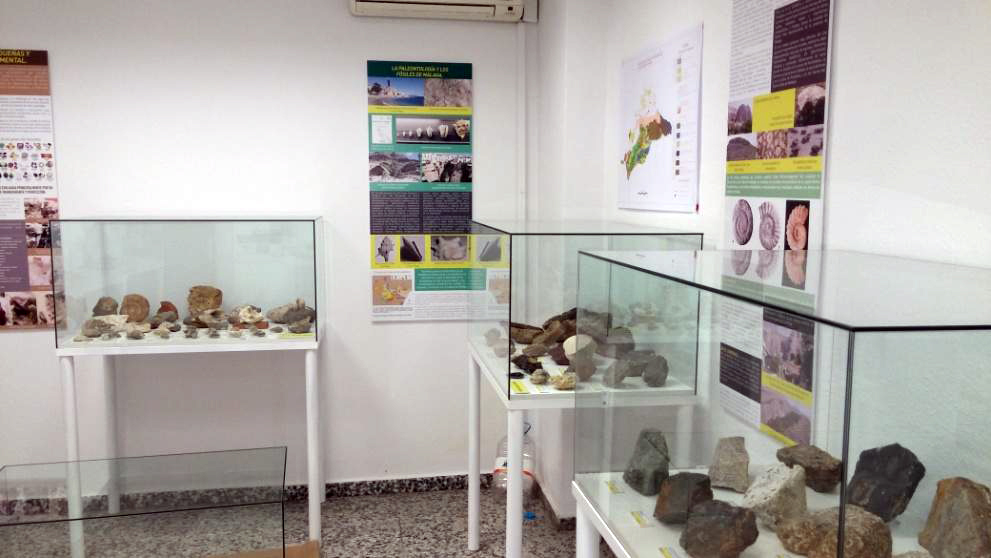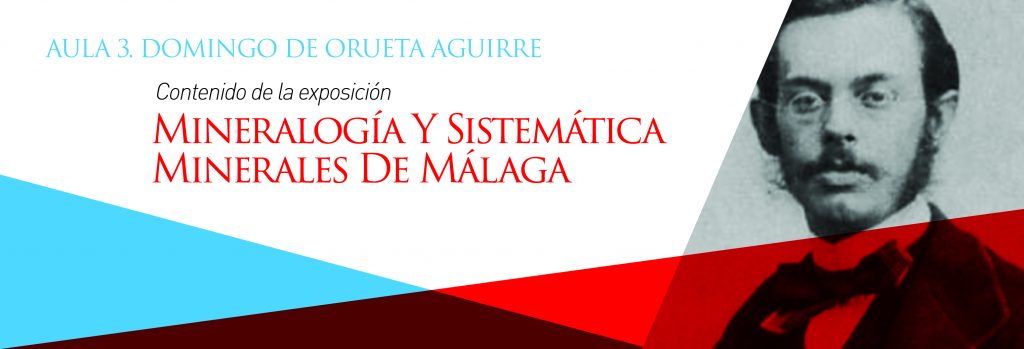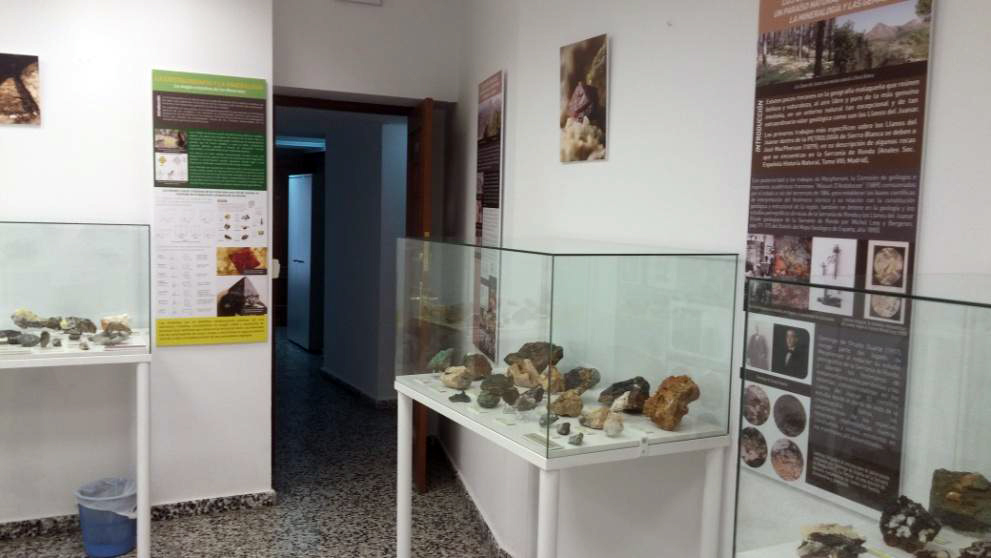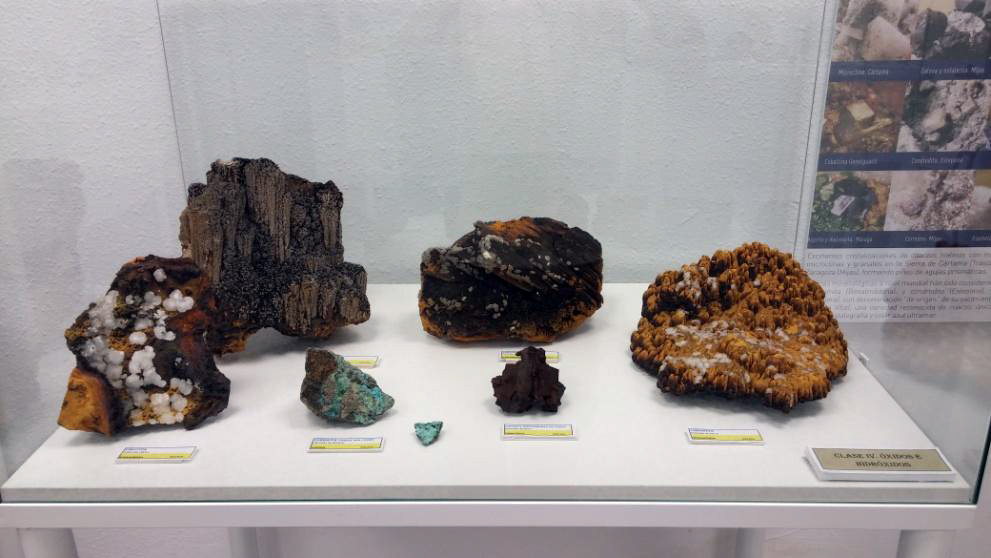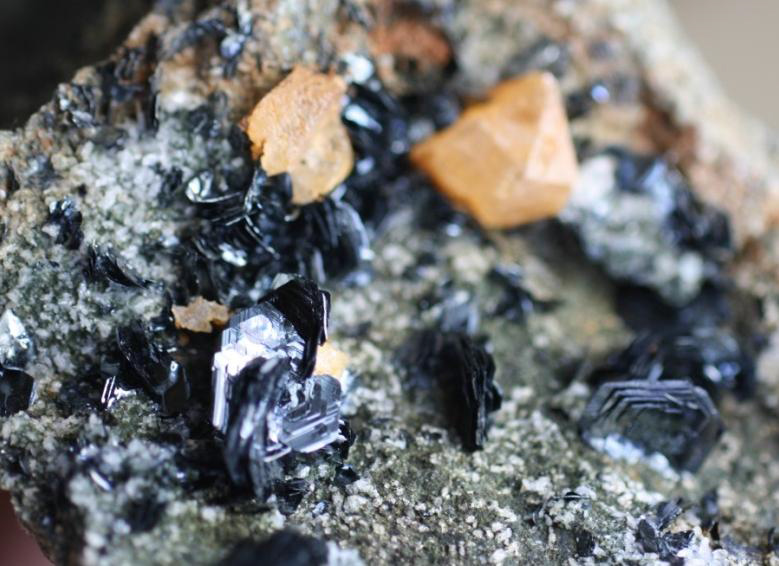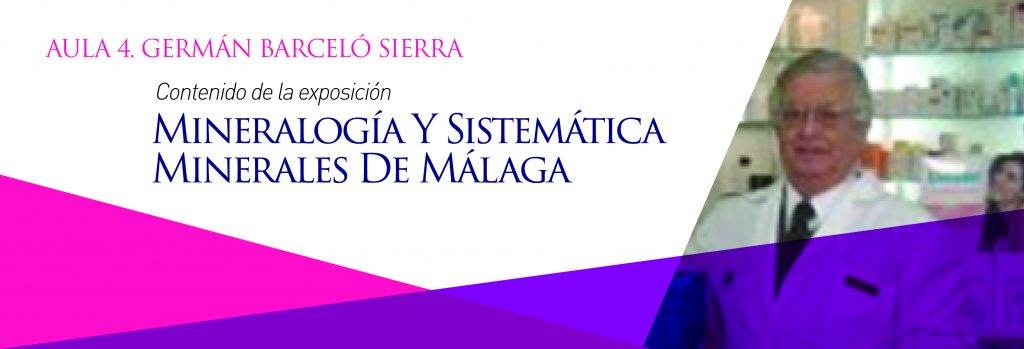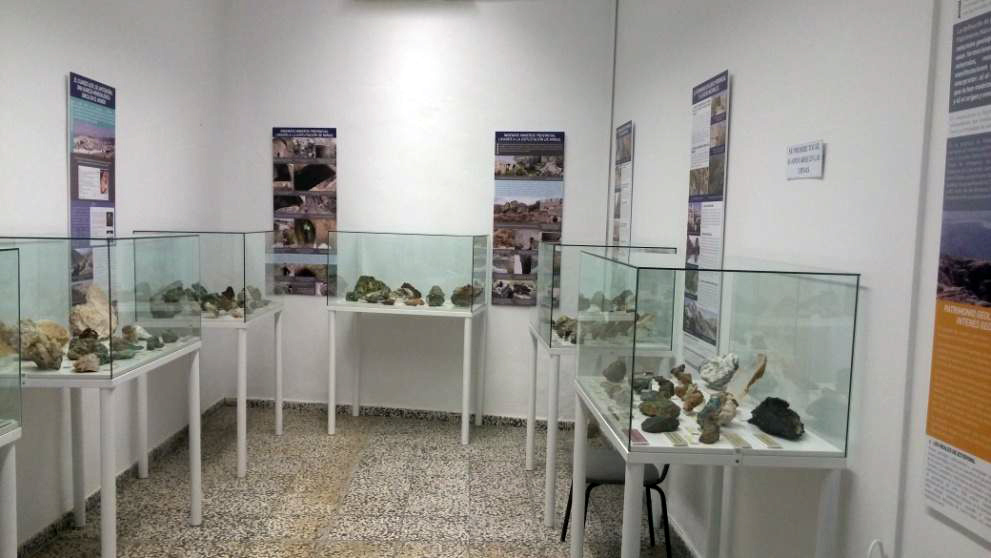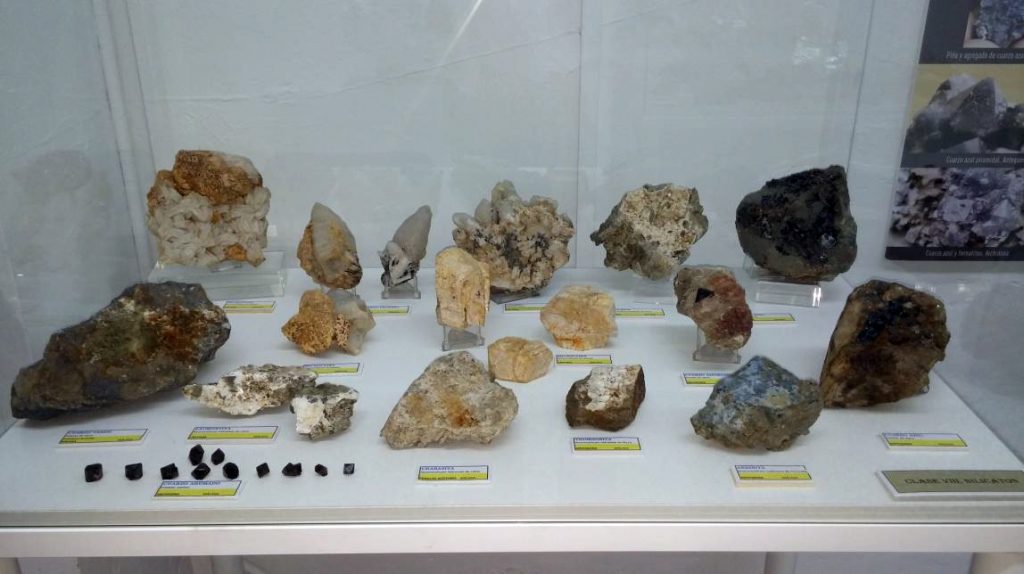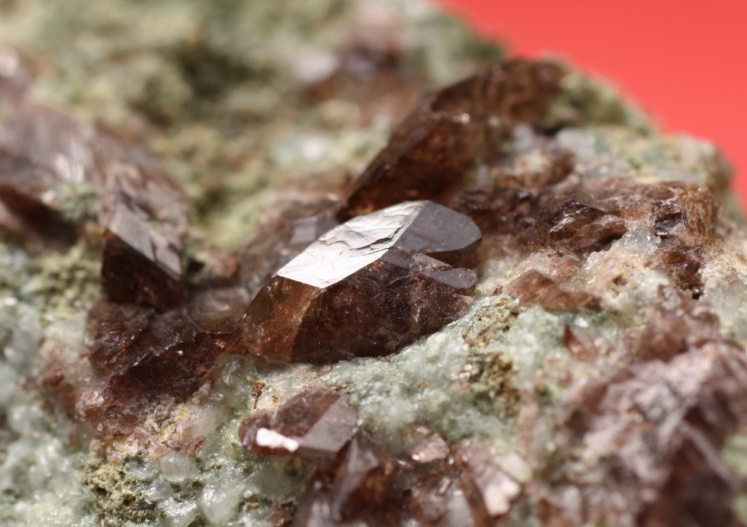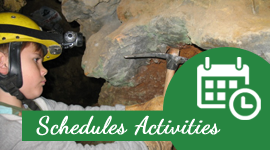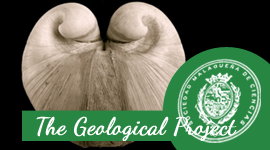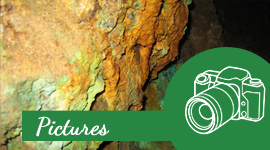The geological display cabinet is formed by four (4) thematic showrooms/classrooms, one conference room, workshop room, archives, and reception office.
The exhibition enhances exclusively local mining-geological resources, most of them, belonging to our scientist and geologists.
The presented collections contain approximately 1500 specimens including minerals, ores, art stones, gemstones, rocks, and fossils. All material without exception, collected in our mountain ranges The display collection includes both well crystallized and systematic specimens. The panels and graphical support at the exhibition rooms illustrate deeply regional features along the geological scenario, mining history development, geological settings at South Europe, mineralogy, gemmy materials, palaeontology, crystallography, and remarkable issues related to mineralogical records. Those collections are well-identified and labelled, and are being used by a wide variety of students, teachers, citizens, local administration and geological community.
Classrooms are displayed as the following:
Classroom dedicated to the famous mining engineer Domingo de Orueta Duarte with the following subjects:
- Archaeometallurgy section, and local mining history
- Metals (in situ ores) and minerals / raw materials for industrial applications (industrial minerals) sections
- Section of the polished stone. Art stone
It is noteworthy pieces of lithic mining instruments from Bronze age (mallets and miner hammers, made of diabase) encountered in copper deposits at Montes de Malaga, crude metals and chromium-nickel ores (Ojen), antimony (La Viñuela), iron (Estepona) tungsten-bismuth (Estepona), cobalt (Málaga, Ojén); raw materials such as graphite (Benahavis), crystalline gypsum “roman lapis specularis” (Almargen), spinel picotite (Estepona), magnesite (Marbella-Ojén) and talc (Mijas); and art stones like Zebra shape-serpentinites (Mijas), concentric dunites (Estepona), banded travertine with beautiful scrolls (Mijas), and jade-type green quartz (Málaga).
Classroom 2. José MacPherson
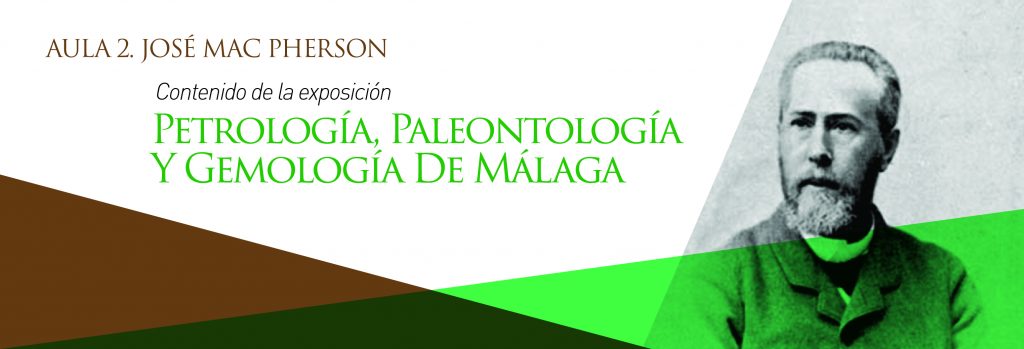
Classroom dedicated to the geological diversity of Málaga region, and local geoscientist Jose Mac Pherson, within the following contents:
- Petrology section. Selected sampling of rocks collections of the province, labelled by origin.
- Palaeontology section. Fossils collections, labelled by age
- Gemmology section. Potential gemmy materials collection
We remark the fossils collection of Pliocene age (gastropods, bivalves) included in clays, silts and sands sequences, collected in Málaga, San Pedro Alcántara and Vélez Malaga (5Mll.years) sedimentary basins; Upper Jurassic ammonite from el Chorro site marine limestones (160Mll.años); huge barium-enriched stromatolites of InfraLías (200 Mll.years) from Málaga area; and coal-mineralized stems equisetum of Permian-Triassic age (240 Mll.years) of Malaga.
We also highlight the fossil raindrops on a red sandstone layer, and several vegetables casts of Permian-Triassic age, as well as Silurian-Devonian coralline structures.
Among the rock collection, magnificent samples of eclogite from Carratraca site (high grade metamorphic rock); peridotites rock cores and dunite from Ojen (ultramaphic rock); foliated garnet gneiss Carratraca (metamorphic rock), and migmatite of Torrox (anatexia).
Among the gemmy materials, exclusive fine spinel from Mijas, Marbella and Benalmádena localities; pinkish tourmaline from Cártama and Estepona; pearly-yellowish calcite from Carratraca; orange scheelite from Estepona, and beautiful and unique blue quartz crystals from Antequera.
The collection also displays orange fire opals of Mijas, and green emerald chrysoprase of Marbella.
Classroom dedicated to the scientist-geologist Domingo de Orueta Aguirre and the systematic of species with the following groups (Strunz nomenclature):
- Native elements (Class I), Sulphides (Class II) Halides (Class III), Oxides and Hydroxides (Class IV), Carbonates (Class V)
Among the extraordinary specimens of the section of Mineralogy inside classroom 3, we enhance excellent examples of native antimony (Vinuela), native sulfur (Antequera), native bismuth (Estepona), magnetites (Marbella,Ojen), outstanding well crystallized fasaite prisms on pyrrhotite (Marbella), fine crystallized pyrites (Cártama,Marbella), colourful assorted of crystallized spinels (Mijas, Ojen and Benalmádena), rutile and ilmenite crystals (Ojen), well crystallized “iron roses” hematite (Archidona), large cabinet size and beautiful specimens of limonite (Benalmádena), pseudomorph limonite after pyrite (Carratraca), excellent large cabinet specimens and well-crystallized azurites on ankerite (Málaga), hydrozincite (Málaga), and radiated-sprayed malachite on matrix (Málaga).
Systematics of species at Málaga province, dedicated to deceased pharmacist and mineralogist Germán Barceló Sierra, lecturer professor with the following Strunz classes:
- Borates (Class V), Sulphates (Class VI), Tungstates, Molybdates (Class VI), Phosphates, Arsenates, Vanadates (Class VII), and Silicates (Class VIII).
Among the borates, we mention a large cabinet and rare, dark-black sprayed ludwigite specimen (Igualeja).
We emphasize an extraordinary assortment of beautiful silicates which represent the majority group of the exhibition. Note as per example, unique large cabinet specimens of blue quartz crystals on greenish ophite matrix from typical locality at Antequera region; tourmaline, microcline and quartz crystals from Cartama pegmatites; and vuggy quartz needles (sea urchin- shape) from Mijas.
We also highlight samples specimens of purple-reddish phlogopite (Estepona), well-defined andalusite crystals on quartz (Fuengirola), white sheets of talc (Ojén), yellowish-greenish titanite (Ojén and Marbella), orange clinohumite aggregates of Benalmádena, large cabinet specimen of rare pumpellyte and epidote on ophite matrix (Antequera); kyanite on quartz (Canillas de Aceituno), and well-crystallized and rare, pale yellowish chondrodite (Estepona), among many others.



